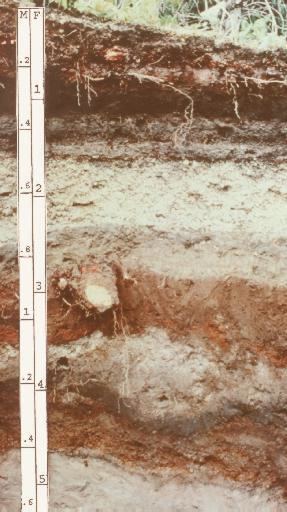Used in WRB Profile ABwC Climate various | WRB code AN Parent material tephra | |
 | ||
Andosols (from Japanese an meaning dark' 'and do soil, a synonym of kuroboku) are soils found in volcanic areas formed in volcanic tephra. In some cases can andosols also be found outside active volcanic areas. Andosols cover an estimated 1–2% of earth's ice-free land surface. Andosols are closely related to other types of soils such as vitrosols, vitrandosols, vitrons and Pumice Soils that are used in different soil classification systems.
Poorly developed andosols are often rich in vitreous materials and are therefore also called vitric andosols.
Andosols are usually defined as soils containing high proportions of glass and amorphous colloidal materials, including allophane, imogolite and ferrihydrite. In the USDA soil taxonomy, andosols are known as andisols.
Because they are generally quite young, andosols typically are very fertile except in cases where phosphorus is easily fixed (this sometimes occurs in the tropics). They can usually support intensive cropping, with areas used for wet rice in Java supporting some of the densest populations in the world. Other andosol areas support crops of fruit, maize, tea, coffee or tobacco. In the Pacific Northwest USA, andosols support very productive forests.
Andosols occupy ~1% of global ice-free land area. Most occur around the Pacific Ring of Fire, with the largest areas found in central Chile, Ecuador, Colombia, Mexico, the Pacific Northwest USA, Japan, Java and New Zealand's North Island. Other areas occur in the East African Rift, Italy, Iceland and Hawaiʻi.
Fossil andosols are known from areas far from present-day volcanic activity and have in some cases been dated as far back as the Precambrian 1.5 billion years ago.
